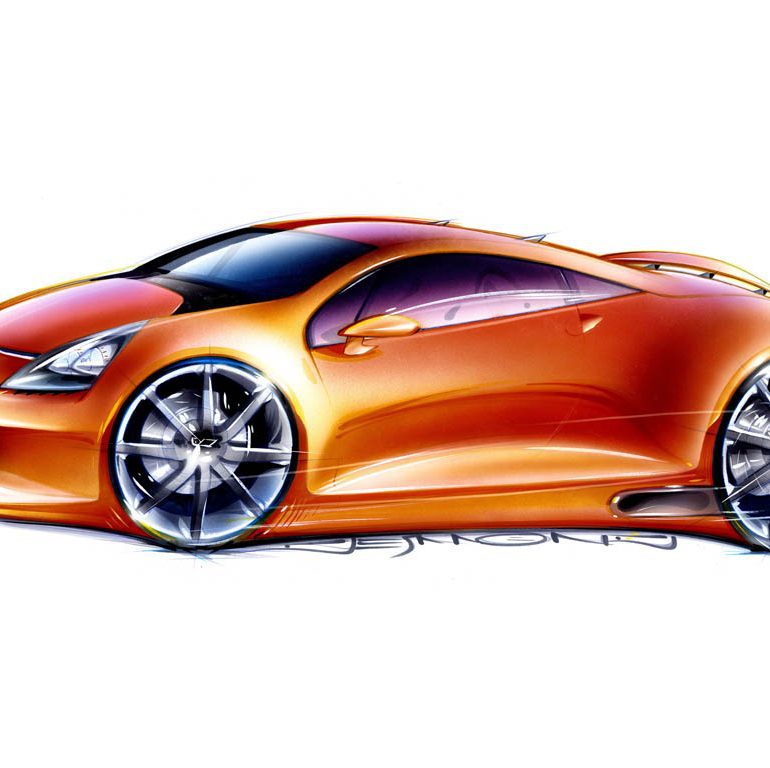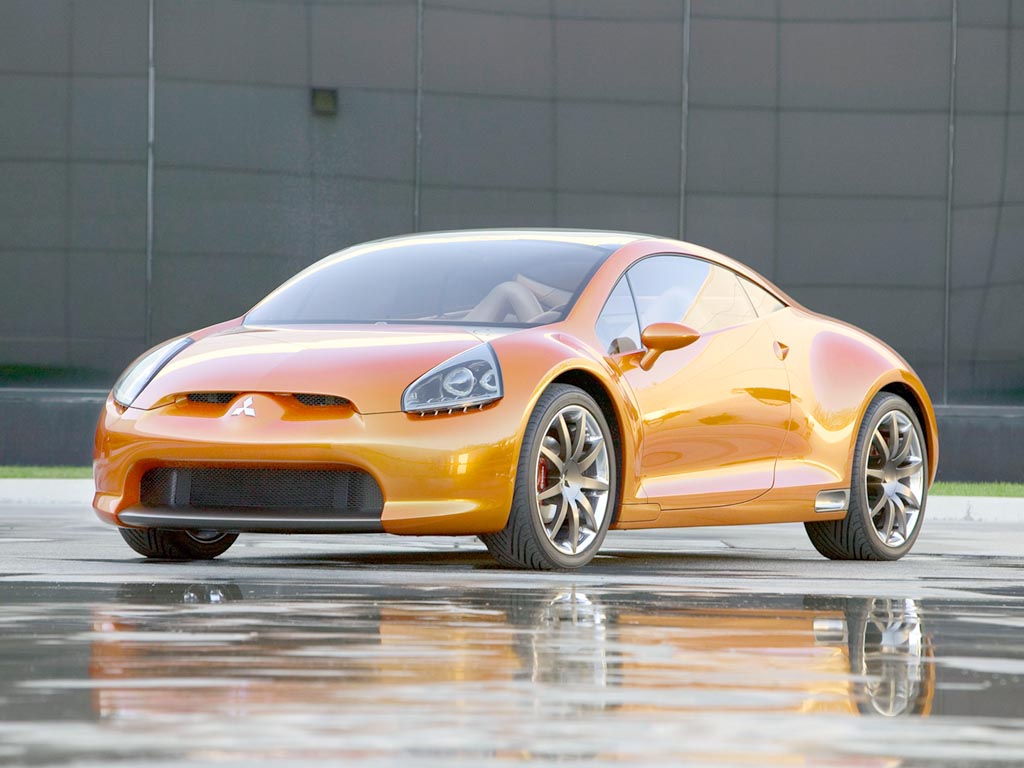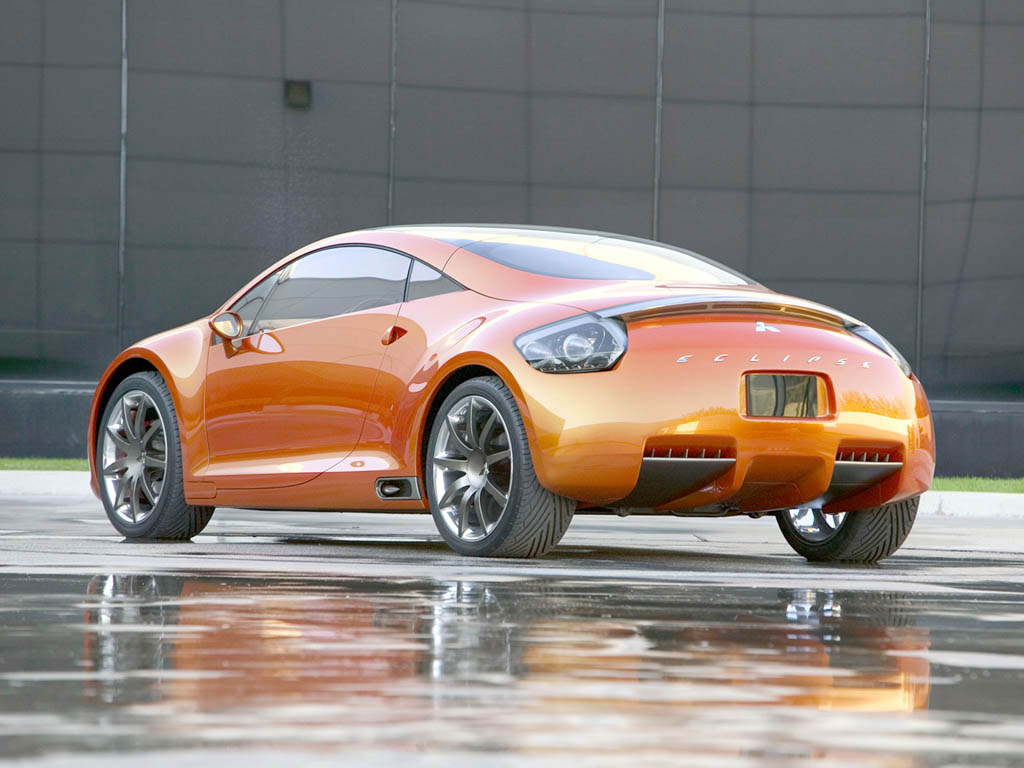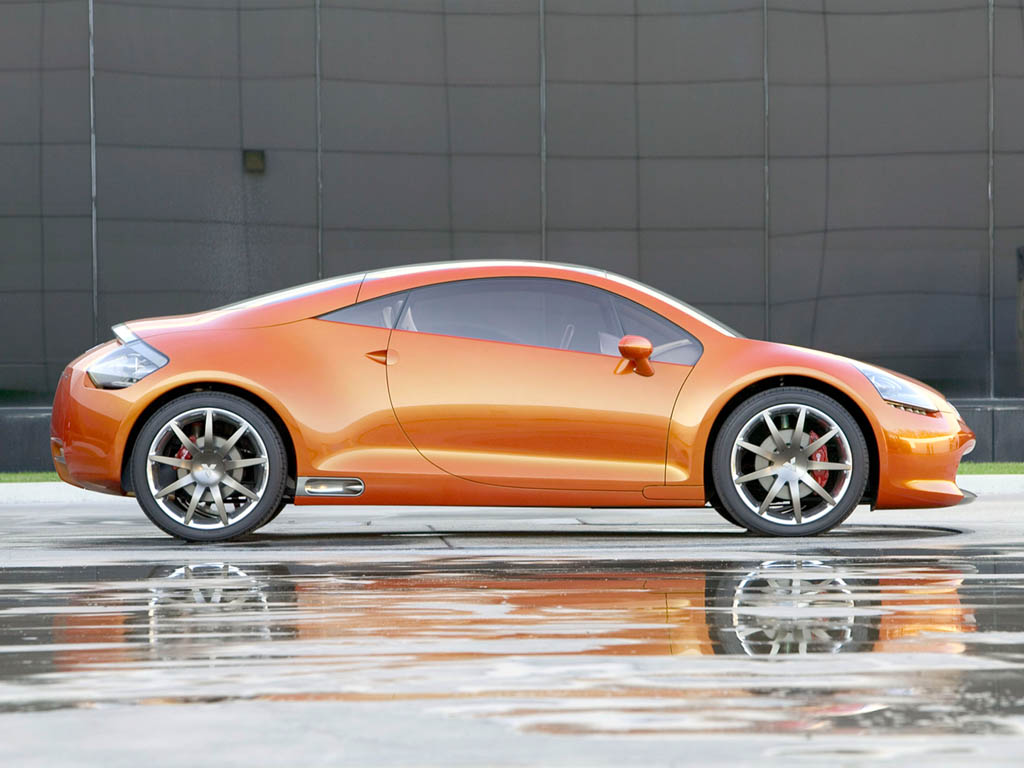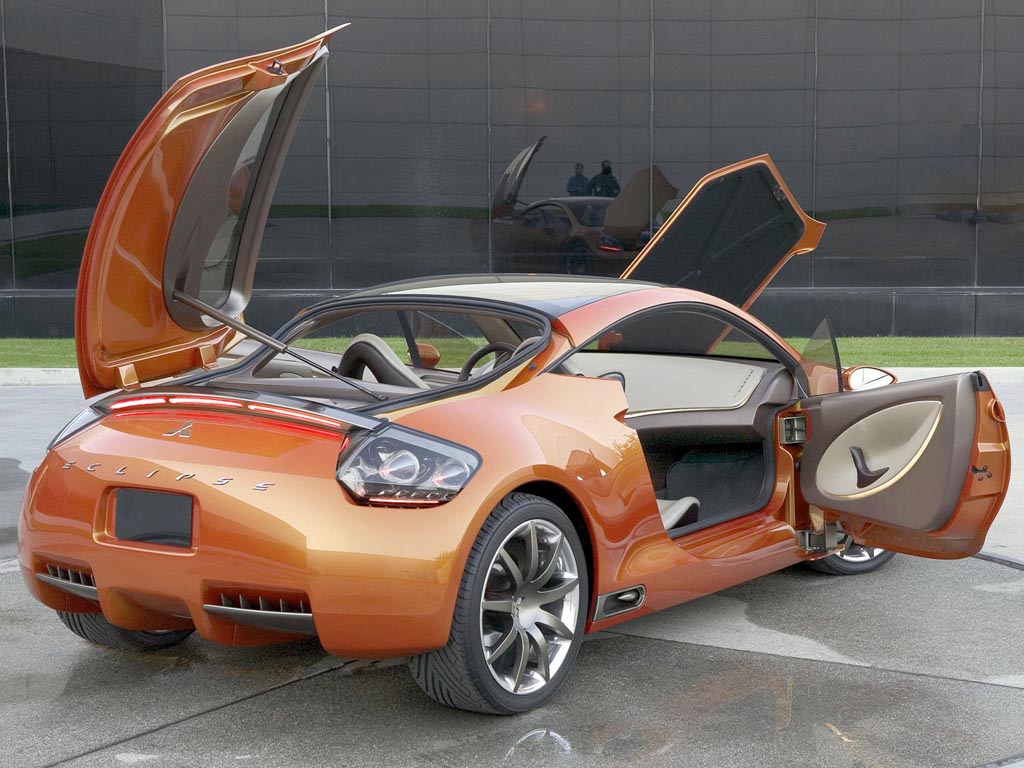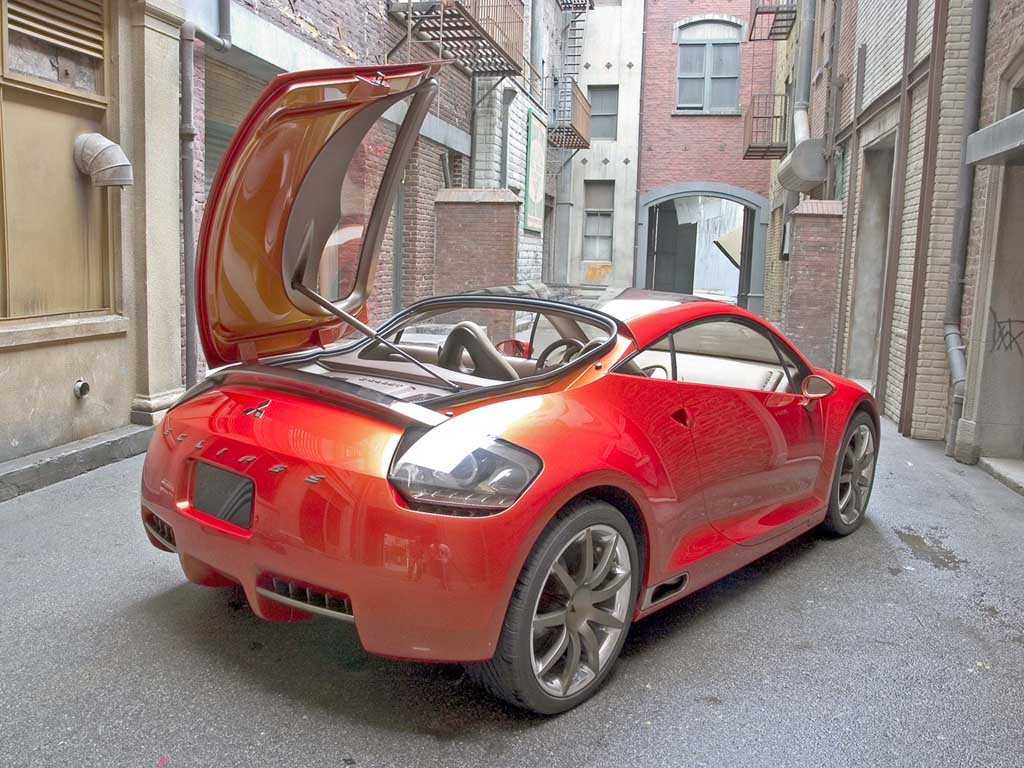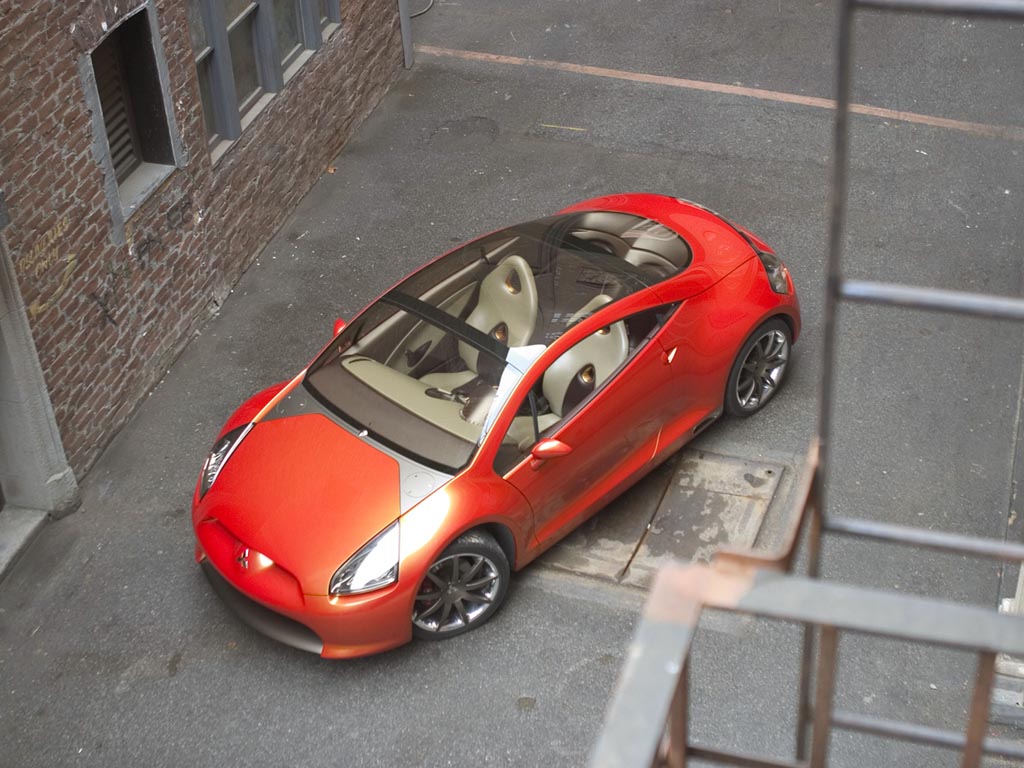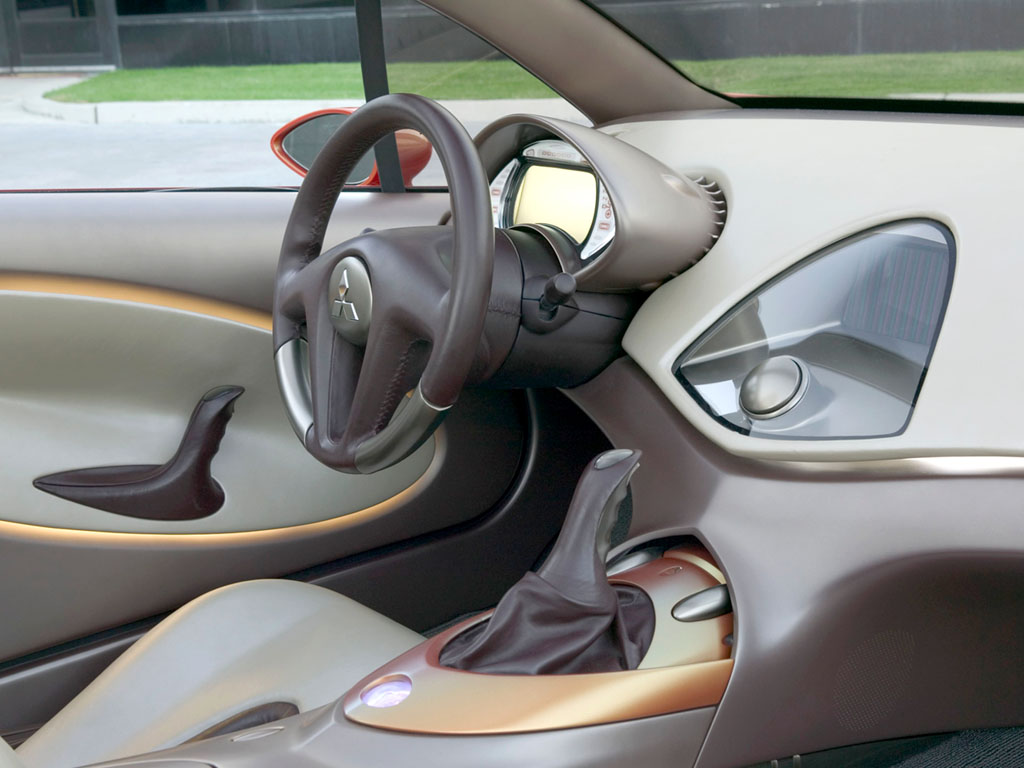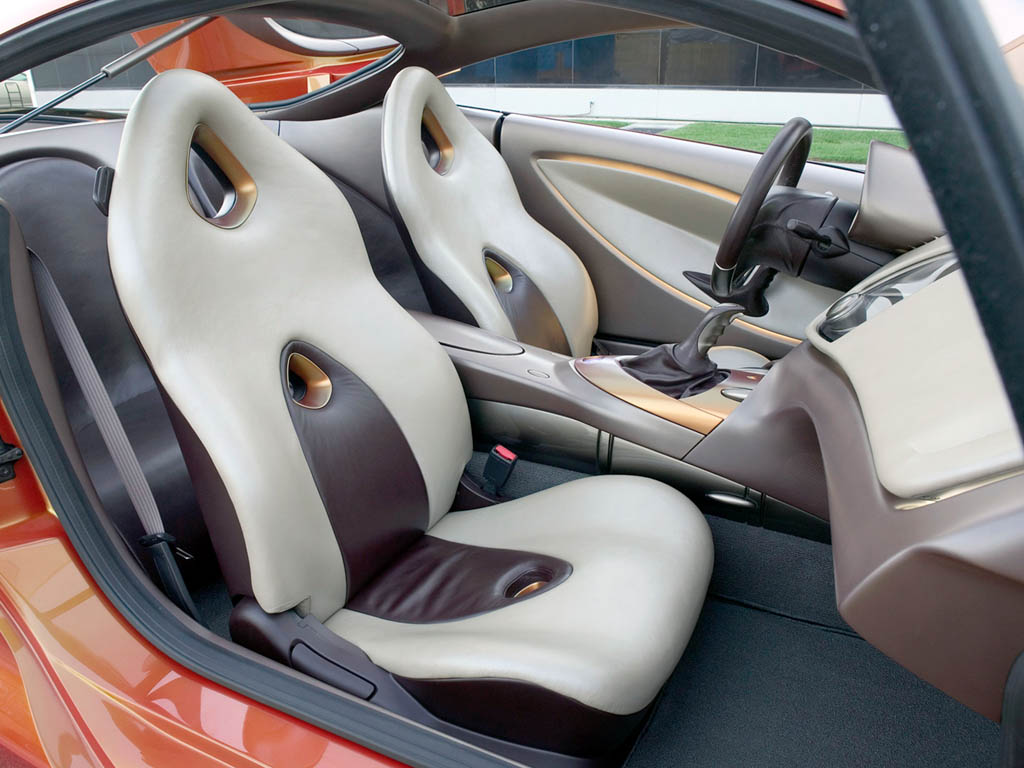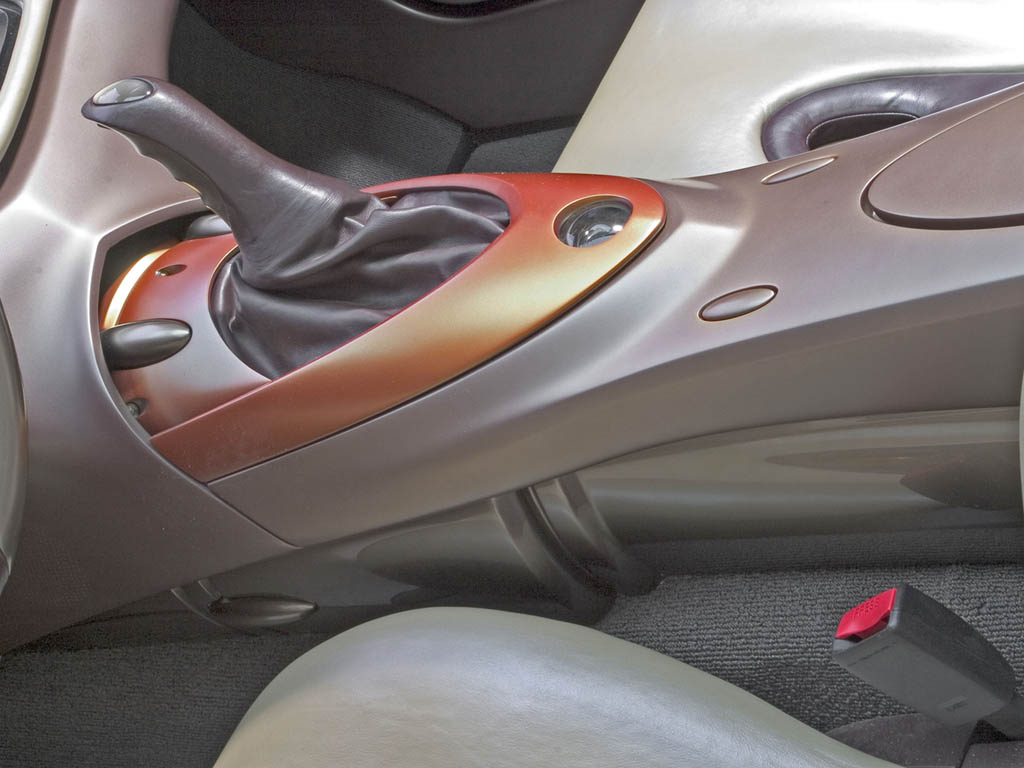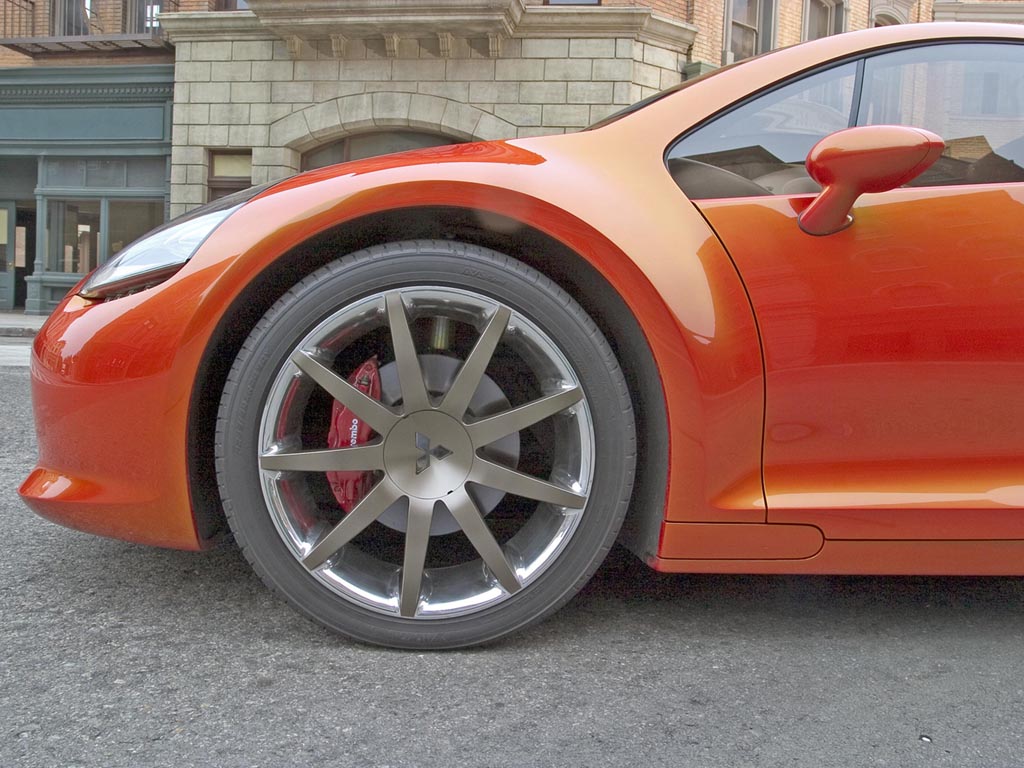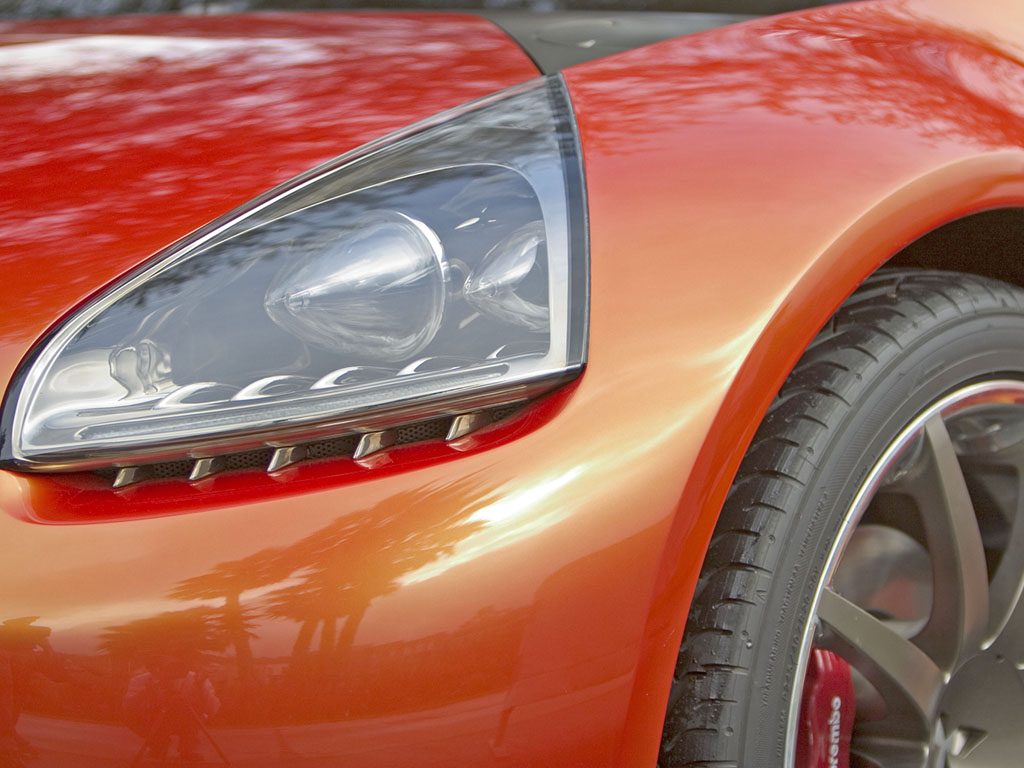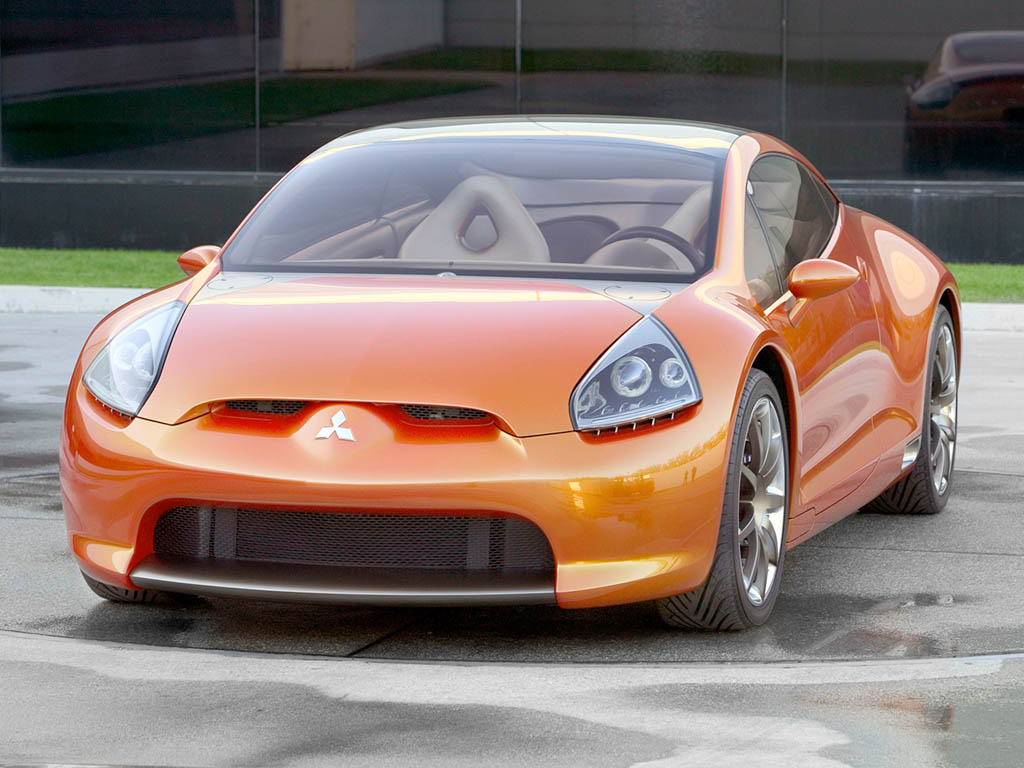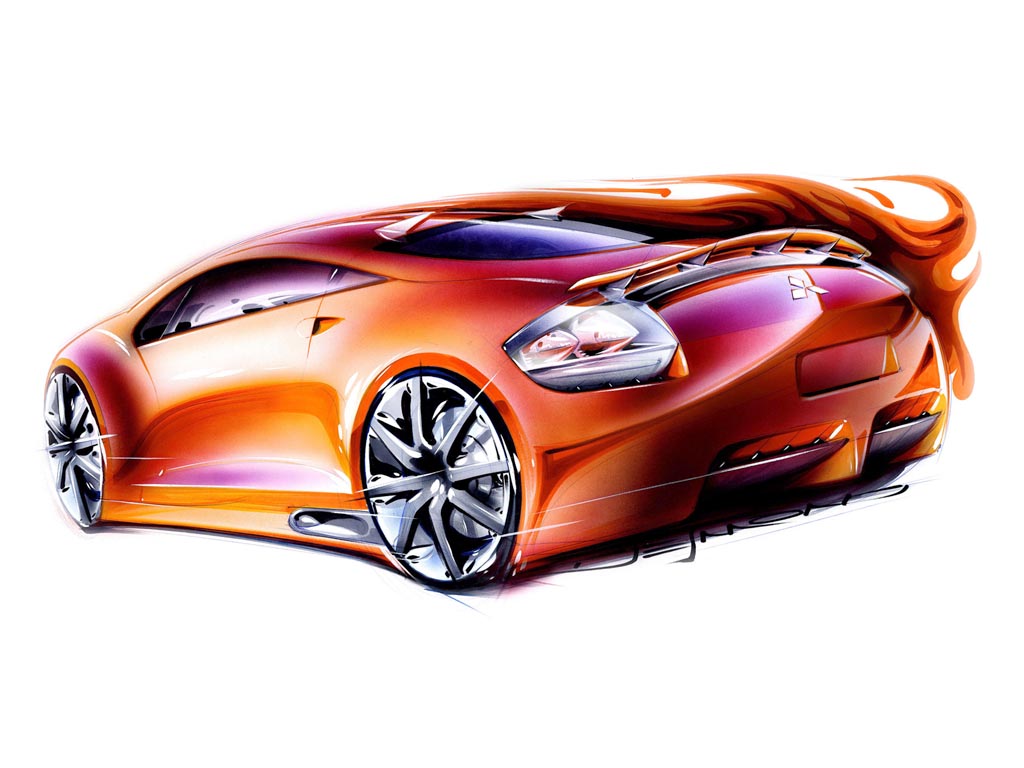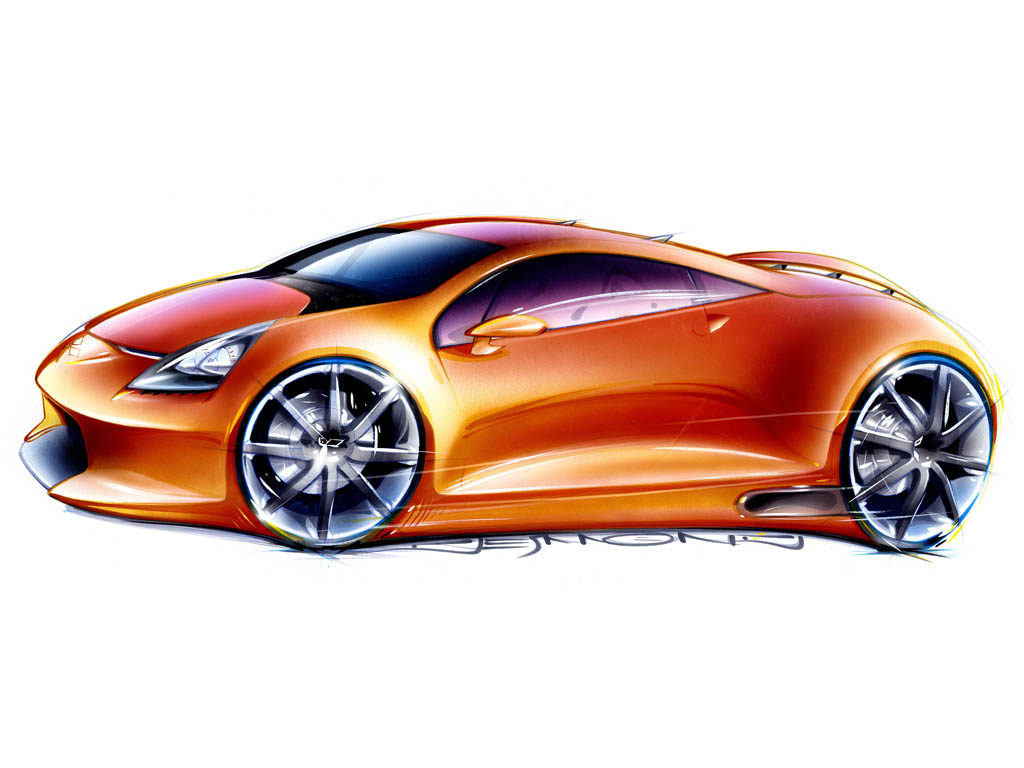2004 Mitsubishi Eclipse Concept-E
January 5, 2004 — Detroit — Like a soothsayer peering into a crystal ball, Mitsubishi Motors North America, Inc. (MMNA), today provided a glimpse into the future through the Eclipse Concept-E.
But perhaps the future is more clearly visible through the glowing plasma bulb located in the car’s center console. Because when the Eclipse Concept-E’s parallel hybrid motor is switched on, that plasma indicator light glows with its own unique energy, letting the driver know that there’s more here than meets the eye.
Upon initial glance, what meets the eye is a highly styled coupe. Featuring plasma running lights and taillights; neon crackle-tube indicators and brake lights; and a glass roof that offers ambient luminescence of its own, the Concept-E could be called a study in light.
But an innovative all-wheel-drive (AWD) configuration-in which parallel engines provide power to both the front and rear axles-also makes the Eclipse Concept-E a study in high-tech mechanics. Thanks to this unique hybrid system, called E-Boost, the Concept-E delivers a continuous, uninterrupted stream of power even while the six-speed automated manual transmission changes gears. The result is a car that boasts performance to match its aerodynamic appearance.
Suspension
Since its introduction to the North American market, the Eclipse compact sports coupe and convertible series has won wide acclaim for its styling and its segment-leading performance. The Concept-E carries that performance-bred spirit to electrifying new heights.
The Eclipse Concept-E rides on 245/40R20 front and 275/35R20 rear performance tires, and nine-spoke, 20-inch wheels suspended by independent multi-links at all four corners. In fact, the rear suspension and differential were designed specifically for high performance; the rear suspension setup is the same one found underneath the motorsports-bred Lancer Evolution-series sedan.
Engine
The Eclipse Concept-E’s front wheels are powered by a 3.8-liter V-6 engine that features Mitsubishi Innovative Valve timing and lift Electronic Control (MIVEC). Driving the rear wheels is a rear-mounted E-Boost electric motor which provides an additional 200 horsepower, for a total output of 470 horsepower. Because it is not affected by gear changes, the throttle-actuated electric rear motor gives the Eclipse Concept-E a constant source of power when it’s needed, which directly translates to higher, more efficient performance.
Besides raw speed, the hybrid powertrain also improves fuel economy and lowers emissions when compared to vehicles with engines that develop in excess of 450 horsepower. And when value is added to the equation, the Concept-E is at least equal to its mass times the speed of light, squared.
Interior
While the two-plus-two seating configuration is carried into this preview of the fourth-generation Eclipse, that’s where most similarities end. Inside, the Wave Line design theme includes an instrument panel that combines shadow and light, hard lines and soft curves, to create an elegant, relaxing an thoroughly modern environment.
‘The Concept-E makes use of traditional Japanese design – the incorporation of paradoxically complex elements in a simple manner,’ said Olivier Boulay, general manager of the Mitsubishi Motors Product Design Office.
Light and shadow seem to merge inside the Concept-E, but the design cohesiveness goes further: Raindrop-shaped door panels, which resemble the shape of the exterior mirrors, give the interior a cohesive look and feel, and metallic-toned leather performance seats appear to conduct an electricity of their own.
Rear seat passengers benefit from the side-hinged hatch. Moving the hinge away from the roof saved nearly two inches of rear headroom.
Deep Video Imaging and Multi-Layer Display(TM) (MLD) technology provide the driver and passengers with simulated gauges, diagnostic information and interactive displays in an intuitive, multidimensional format.
Exterior
The Concept-E presents a distinctive front visage featuring the new Mitsubishi Motors corporate identity crafted around a prominent three-diamond logo. The front grille vent and integrated front spoiler evoke the image of a jet fighter. The long wheelbase, short overhangs and cab-forward layout create a highly integrated form which, combined with the raindrop design side window, gives the Concept-E an aggressive, ready-to-pounce profile.
The Eclipse Concept-E’s hybrid electric drivetrain had its own influence on design. As designer Mike Desmond explains: Functional design elements include the side exhaust ports, which allow the electric motor’s batteries to be placed down the center of the vehicle.
The front of the door is raked back at an almost impossible angle, to make the door cut lines accentuate the fenders. To do that, a special lower door hinge had to be designed. The hinge is hidden by a mechanically operated trap-door that folds open when the door opens. And that elliptical shape, in turn, is reflected in the shape of the side exhaust exits. Once again, we were able to integrate complex design elements in a simple manner.
Story by Mitsubishi Motors North America, Inc.
In Detail
| submitted by | Richard Owen |
| engine | Hybrid MIVEC V6 & Electric Motor |
| displacement | 3800 cc / 231.9 in³ |
| power | 200 kw / 268.2 bhp |
| specific output | 70.58 bhp per litre |
| driven wheels | FWD w/RWD by Electronic Motor |
| f brake size | mm / in |
| r brake size | mm / in |
| wheelbase | 2635 mm / 103.7 in |
| length | 4320 mm / 170.1 in |
| width | 1855 mm / 73.0 in |
| height | 1300 mm / 51.2 in |
| transmission | 6-Speed Automated Manual |
| gear ratios | :1 |


